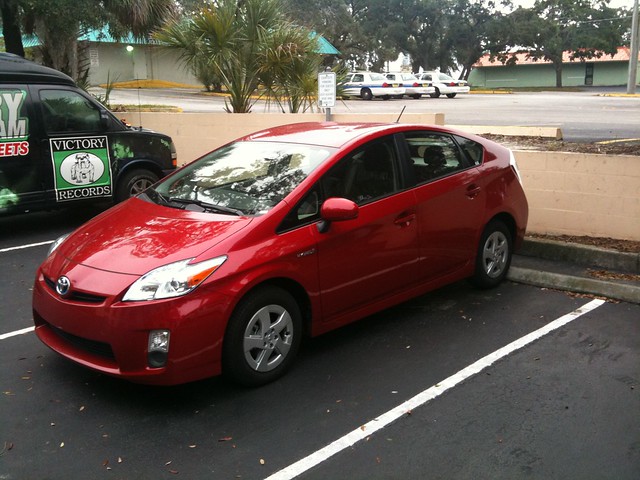Car Review: 2010 Toyota Prius
Message from 2022
This post is pretty old! Opinions and technical information in it are almost certainly oudated. Commands and configurations will probably not work. Consider the age of the content before putting any of it into practice.
The cars used in this review were rented on my own budget.
The 2010 Toyota Prius is not a fast car or a luxury car, and it is not particularly cheap. It is kind of ugly and not great off-road either.
That is okay because it is a good car to drive in a city with friends. It seats five adults (four comfortably), and has a trunk capable of holding three carry-on bags and three backpacks/laptop bags with the privacy cover still able to close. The air conditioning works well, the drive is smooth (the transmission doesn’t have different gear ratios, so there’s no “AARRRGHHH I’M TRYING TO PASS DOWNSHIFT PLEASE” experience), and it blends in well so nobody gawks at the crazy moon car you are driving (may not work in rural areas).
If you are driving it in a dusty city like Las Vegas, you can have quite a bit of fun making the back end slide around during turns and in parking lots. It is hard because the traction control cannot be disabled (at all ever). Leaning on the accelerator makes the engine rev up real high and you kind of speed up, but it’s more fun than the alternative. If you drive like an asshole, you’ll see about 34mpg city, which is pretty incredible.
If you want to get good gas mileage, bring up the “Hybrid System Indicator.” This indicator has the battery capacity, and a bar representing the relationship between wheel speed and the “Hybrid Synergy Drive” (the engine, electric motor, inverter, traction battery, and control logic).
If the bar extends to the left under “CHG,” you are using regenerative brakes, which refill the battery. This will extend a bit if you let off the accelerator at speed, and pressing the brake pedal more will make it longer. When you are coming to a complete stop, you will regenerate the most energy if this bar never gets all the way to the far left; once the bar does fill up, the car will use the mechanical brakes, which turn all that kinetic energy into heat and brake pad wear.
When the bar is in the fat middle section, you are using power from the engine or batteries. Which one? Doesn’t really matter. The car can continue indefinitely with the fat middle section. If you’re in this section, and not in “POWER” or “EV” mode, a little “ECO” flag will show up.
When the bar extends to the “PWR” section at the far right, you’re using power from both the electric and gasoline subsystems. This is “naughty,” but sometimes necessary due to merging or having fun.
If you don’t flog the car too much, monitor this gauge, and play by the rules, you’ll do about 50mpg in mixed highway and city driving.
And that’s why the Prius is a good car for driving in cities; it turns stop and go traffic into a little game.
